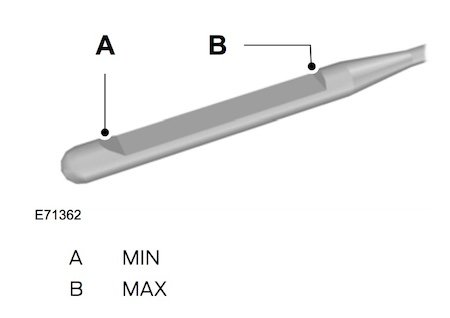
Knowing how to change your vehicle’s oil is a simple yet important skill to know. You don’t have to be a car wizard or a mechanic to understand how to perform simple tasks that are pivotal to the health and wellbeing of your vehicle. We walk you through the steps to check your oil properly, ensuring that next time you have a malfunctioning oil light appear on your dashboard, you can begin the process of diagnosing the problem yourself.
How To Check Your Oil
1. The first step here is to open the hood and look for the dipstick that is labeled “engine oil.” Pull the stick out and wipe all the oil from the stick. The oil tends to splash around and therefore could give you an improper indication as to how the level is if you were to immediately read it from here.
2. Next, you can go ahead and dip the stick back into the oil reservoir and re-pull it out. There should be two dots or indicators towards the bottom of the stick. You want the oil to be somewhere between the two dots, nearing the higher dot, indicating that the oil is at a normal level.
If the oil is at the first dot or indicator this means that it’s probably time for an oil top-up. In addition, if the oil is a darker shade of brown or a milky looking consistency this typically means that the oil has been cycled too many times and it’s definitely time for an oil change. If you ever have doubts about the oil level after checking, you can always rewipe the dipstick and dip it again to double-check the level.

Additional Tips and Tricks:
- If you ever have worries or doubts about your oil level or its colour, you can do your part to check your oil more regularly. Get familiar with the engine oil that you’re using. This will allow you to become more confident in addressing any future discolouration or concerns.
- Never overfill your oil as it has no efficacy and can actually result in spillage into the rest of the body of the vehicle and result in damage.
- You may get a varying response when checking your oil, dependent on the type of oil your vehicle is running on and the temperatures outside. Regular oil will give you the same readings regardless of the temperature. On the other hand, synthetic oil contracts and expands at a higher rate meaning that these blends will be tighter when cold and will expand more when hot. Therefore, try to check it in a space with regulated temperature such as a garage.
You’re All Set
Now you’re all set to check the oil on your vehicle yourself the next time the light comes on or if you personally have suspicions regarding its level. Drive safe this summer and remember to get your oil changed regularly!
